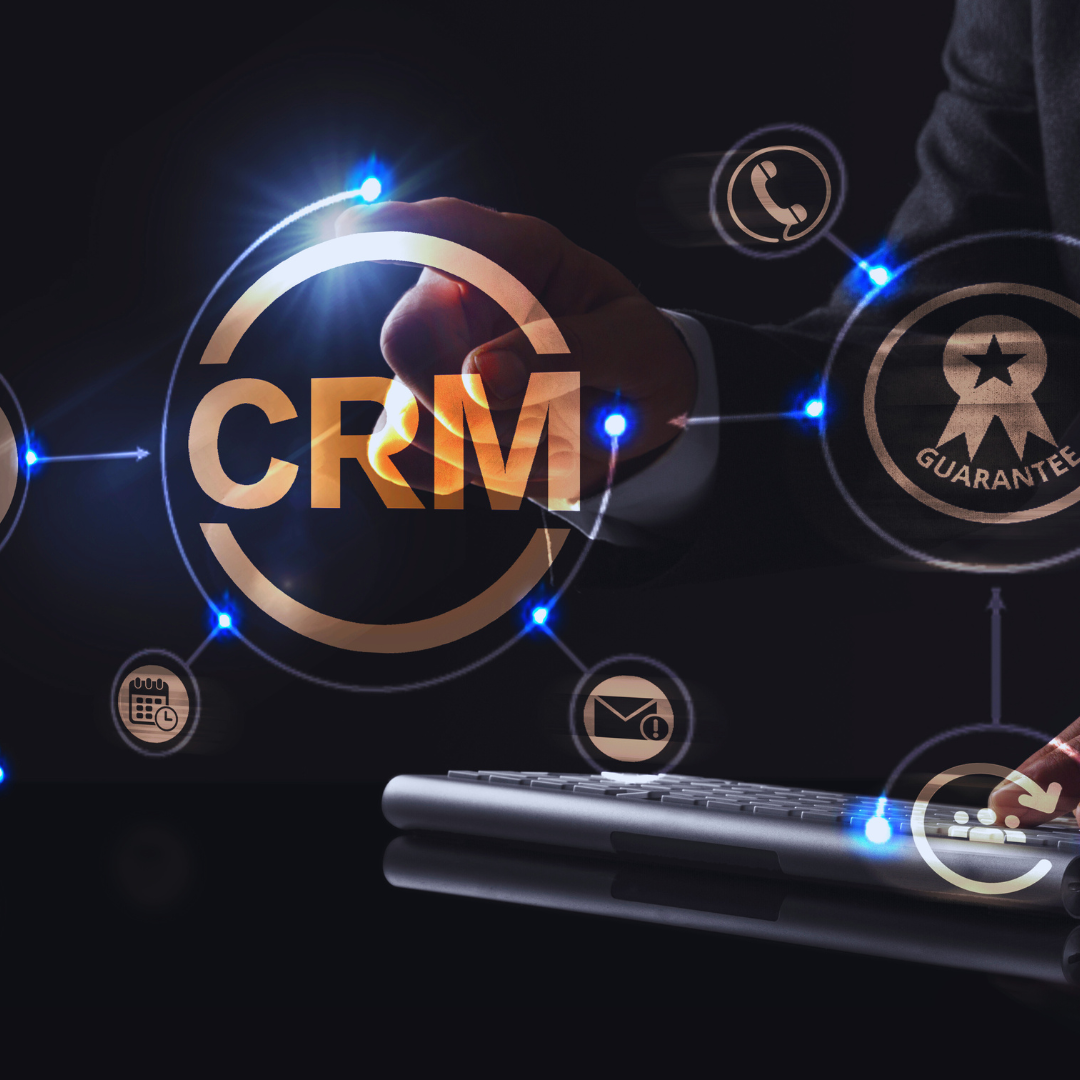
Choosing the right Customer Relationship Management (CRM) system can significantly impact a business’s efficiency and customer satisfaction. To select the most suited CRM, a business must evaluate its specific needs, budget, and scalability requirements. With numerous options available, understanding the core functionalities relevant to the organization is essential.
Businesses should consider how user-friendly the CRM is for their team and whether it integrates well with existing tools. The ability to customize features and automate processes can enhance productivity, making these factors crucial during the selection process.
Additionally, assessing customer support and training options provided by the CRM vendor can ensure a smoother implementation and ongoing use. By aligning CRM capabilities with business objectives, organizations can foster better customer relationships and drive growth.
Defining Your Business Needs and Goals
Understanding specific business needs and goals is essential for selecting an appropriate CRM system. This process involves identifying operational requirements, aligning the chosen solution with existing business processes, and determining clear objectives for a positive return on investment.
Identifying Business Requirements
To identify business requirements, organizations should conduct a thorough assessment of their current operations. This includes evaluating existing workflows, sales processes, and customer interactions.
Gather input from various teams, especially from sales and customer service, as they have firsthand experience with customer relationships.
A list of key requirements might include:
- User Accessibility: Consider the ease of use for the sales team.
- Integration Needs: Identify existing tools that must connect with the CRM.
- Scalability: Ensure the CRM can grow with the business.
This meticulous approach assists in pinpointing a CRM that truly meets the organization’s needs.
Aligning CRM Selection with Business Processes
Aligning the CRM selection with current business processes is critical. This ensures that the new system complements existing operations instead of disrupting them. Business processes should be mapped out to reveal how information flows through the organization.
Identify critical factors such as:
- Customer Interaction Points: Understand where customer relationships can be improved.
- Data Management: Assess how customer data is currently organized and utilized.
- Workflow Integration: Determine how the CRM will fit into everyday activities.
This alignment allows for a more seamless transition and enhances user adoption.
Setting Clear Objectives and Expected ROI
Setting clear objectives for the CRM implementation helps in measuring success. This includes defining what the organization expects to achieve, such as increased sales, improved customer satisfaction, or efficient operations.
Key measurable objectives may include:
- Sales Growth: Aim for a specific percentage increase post-implementation.
- Customer Retention Rates: Establish targets for retaining existing clients.
- Operational Efficiency: Define how much time should be saved in administrative tasks.
Estimating the expected ROI involves calculating potential gains from improved processes and customer relationships. This assessment provides a solid foundation for the investment decision and ensures that the CRM will deliver value over time.
Evaluating CRM Features and Suitability
When selecting a CRM, assessing specific features and suitability for the business is crucial. The right features enhance productivity and fit seamlessly into existing workflows. Consideration of customization options, deployment methods, and user experience also plays a key role.
Key Features to Look For
Essential features in a CRM include contact management, sales automation, and analytics capabilities. Contact management allows businesses to track customer interactions effectively. Sales automation streamlines processes, reducing manual tasks and increasing efficiency.
Analytics features are vital for informed decision-making. They can provide insights into sales trends and customer behaviors. Additionally, look for functionalities like email integration and task management, which enhance collaboration and communication across teams. A CRM solution tailored to specific business needs will yield better results.
Customization and Scalability Considerations
A significant aspect of choosing a CRM is its ability to be customized. Businesses often require specific functionalities to support their unique processes. Customization options, such as adaptable fields and personalized dashboards, ensure that the CRM fits the organization’s workflow.
Scalability is equally important. As a business grows, its CRM requirements will evolve. A suitable CRM should easily accommodate additional users and advanced features without causing disruptions. Selecting a scalable CRM prevents future headaches and ensures that the system continues to meet demands.
Cloud-Based vs. On-Premise CRM Solutions
When evaluating CRM solutions, organizations must decide between cloud-based and on-premise options. Cloud-based CRM offers flexibility and accessibility, allowing users to access data from anywhere with an internet connection. This is particularly beneficial for remote teams.
On-premise CRM provides businesses with more control over data security and customization. However, it requires significant upfront investment and ongoing maintenance. Understanding the advantages and drawbacks of each deployment method helps in making an informed decision based on the business’s specific needs.
Ease of Use and User Adoption
The ease of use of a CRM solution can significantly impact user adoption. A user-friendly interface ensures that employees can quickly learn and navigate the system. This is vital for maximizing the return on investment in CRM software.
Feature-rich systems can be overwhelming if they lack intuitive design. Training and ongoing support also play a role in facilitating user adoption. It’s beneficial to involve team members in the selection process to gather insights on usability and ensure that the chosen solution aligns with their needs.
Comparing CRM Vendors and Implementation
When selecting a CRM, evaluating vendor reputation, support services, and implementation processes is crucial. Effective assessment helps ensure a smooth transition and long-term success with the chosen software.
Vendor Reputation and Support
A vendor’s reputation is a critical factor in selecting a CRM. Researching user reviews and ratings can provide insight into the software’s reliability and effectiveness. Checking platforms like G2 and Capterra can be beneficial for this purpose.
Support services offered by vendors significantly impact user experience. Assessing availability, response time, and options for support (such as phone, chat, or email) can guide the decision. Companies should prioritize vendors with a strong support infrastructure and dedicated customer success teams to assist with implementation challenges.
Demo, Free Trial, and Performance Assessment
Taking advantage of demos and free trials is essential in evaluating CRM software. This hands-on experience allows businesses to assess functionality, usability, and how well the software aligns with their needs.
During the trial, potential users should focus on critical performance indicators such as speed, reliability, and integration capabilities. Engaging team members in the trial ensures that all perspectives are considered. Documenting issues and feedback during this period can inform the final decision about vendor compatibility.
Budget and Total Cost of Ownership
Budget considerations go beyond the initial purchase price of the CRM software. Companies must account for licensing fees, implementation costs, and any potential future expenses, such as add-ons or upgrades.
Understanding the total cost of ownership will help avoid unforeseen expenses. It is advisable to obtain detailed quotes from vendors and to clarify what is included in the pricing. Comparing the long-term value against the benefits of the CRM solution will lead to more informed choices.
Ensuring Data Security and Migration Success
Data security and successful migration are critical when selecting a CRM system. Careful planning and attention to security features ensure customer information remains safe and accessible throughout the transition process.
Data Migration Planning
Effective data migration begins with a detailed plan. Organizations should assess the volume and types of data to be transferred, ensuring that all relevant customer information is accounted for. Creating a timeline helps manage expectations and staff responsibilities. Key steps include:
- Data Audit: Review existing data for accuracy and relevance.
- Backups: Ensure complete backups are made before starting the migration.
- Testing: Conduct a pilot migration to identify potential issues before the full rollout.
This structured approach minimizes disruptions to customer communication and supports smooth reporting and data-driven decisions.
Security Features and Compliance
When choosing a CRM, it is vital to evaluate its security features. Look for systems that offer robust encryption, both at rest and in transit. Strong access controls ensure that only authorized personnel have access to sensitive customer information.
Additionally, compliance with regulations such as GDPR or CCPA is essential. Vendors should demonstrate adherence through:
- Security Certifications: Verify that the CRM provider has relevant certifications.
- Regular Audits: Ensure that security protocols are reviewed frequently.
- Incident Response Plans: Confirm that the provider has a clear plan for data breaches.
These elements play a crucial role in protecting customer interactions and maintaining trust.
Maintaining Customer Information Integrity
Maintaining data integrity during migration is critical for the ongoing customer experience. Any loss or corruption of data can affect sales pipeline management and marketing team effectiveness.
To ensure integrity, organizations should:
- Data Mapping: Clearly outline how current data will fit into the new CRM structure.
- Validation Processes: Implement checks to confirm data accuracy after migration.
- User Training: Educate staff on how to use the new CRM effectively, emphasizing the importance of data entry standards.
These practices help preserve the quality of customer information and enhance customer service capabilities.



